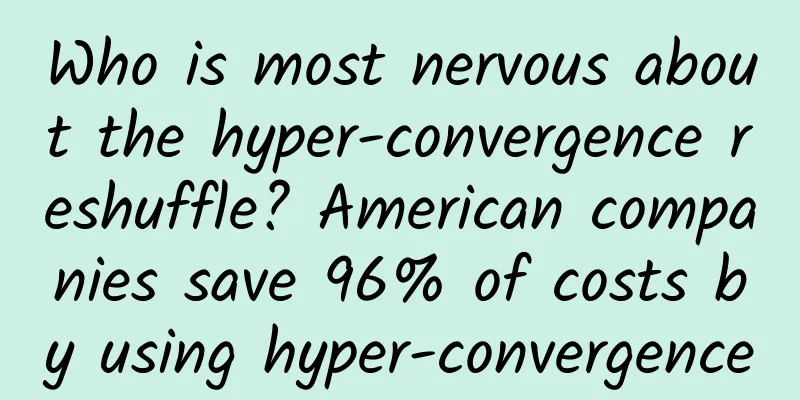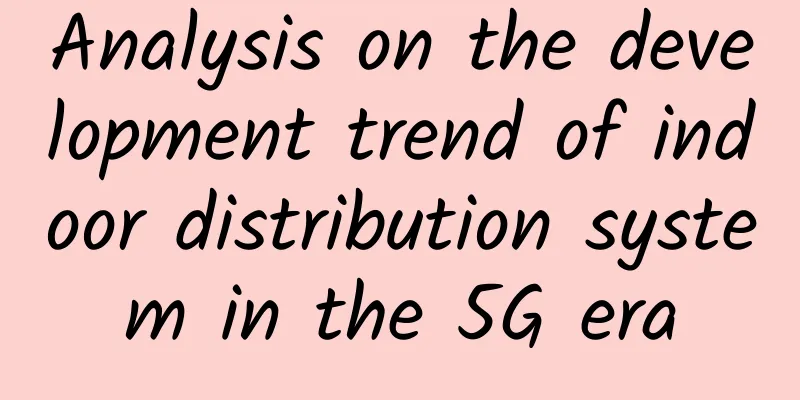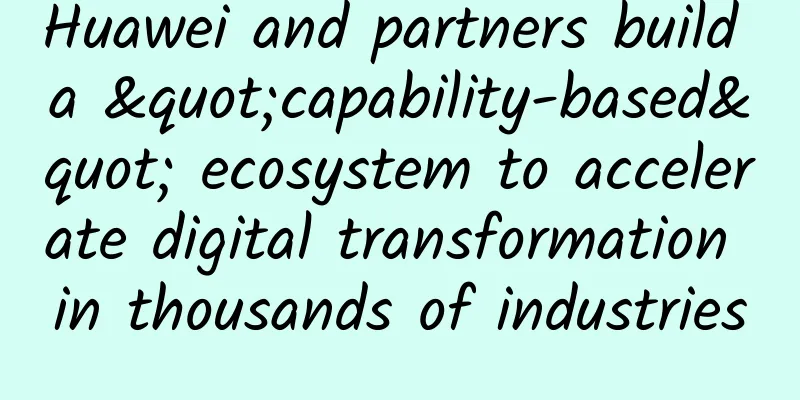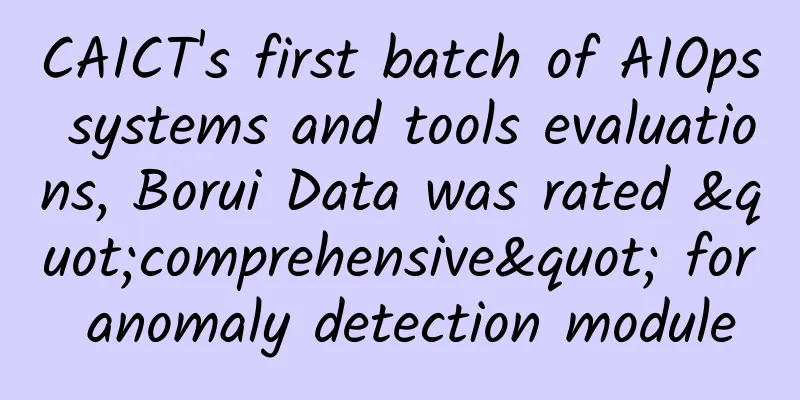How does Shaanxi Government Affairs Cloud, which is required to be online throughout the entire process, take the lead in setting the trend?
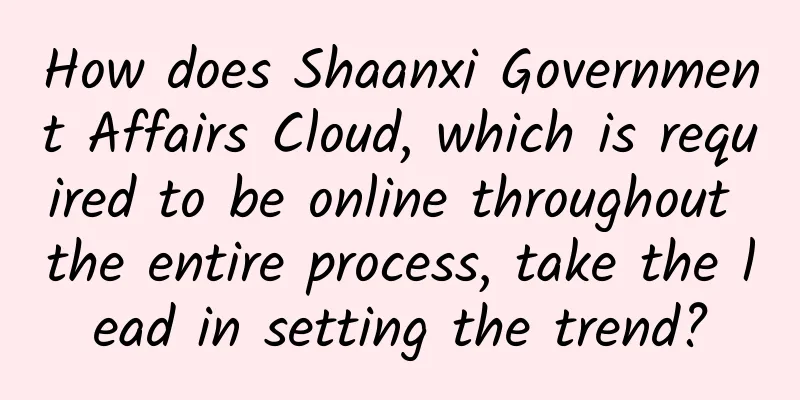
|
From the Qin Emperor and Han Emperor to Emperor Wu of Tang and Zhou, Xi'an (Chang'an) has always been the center of China. The three thousand years of ancient capital and the five thousand years of Yellow River culture have left a deep imprint of Chinese civilization on the people of Shaanxi, cultivating a character of tolerance, self-confidence and perseverance. With the rise of a wave of "Internet + government services" and smart city construction across the country, the government cloud market, which is considered to be a core module, has grown rapidly. In the surging wave of government cloud construction, Shaanxi has taken the lead and built the first, largest and most widely deployed government cloud platform in China, once again standing at the "center" of history.
Government cloud deployment is advancing in depth The Shaanxi Government Cloud Platform was established in 2012. It is reported that after the platform was built, 1,233 business systems, four basic databases and hundreds of shared or professional databases of 95 provincial departments, 300 departments in 11 cities and 460 departments in 107 counties in Shaanxi Province were deployed and operated on this platform. As a result, government departments at all levels have gotten rid of the burdens of shortage of information technology funds, weak technical strength and lack of talent. Relying on the province's unified e-government public platform to deploy business applications, the construction period has been shortened by an average of more than 70%, construction funds have been reduced by an average of more than 50%, and application promotion time has been shortened by an average of more than 70%. Such "achievements" have made Shaanxi Province the birthplace of government cloud, and it seems to have continued the glory of the former red revolutionary holy land. Government officials and enterprises from all over the country have flocked to "make a pilgrimage". As time goes by, Shaanxi's government cloud also needs to "keep pace with the times" to cope with the endless new demands and new applications. In December last year, the Shaanxi Provincial Government issued the "Implementation Opinions on Accelerating the Promotion of the "Internet + Government Services" Work in the Province" (hereinafter referred to as the "Opinions"), mentioning that by the end of 2017, the provincial "Internet + Government Services" platform will be basically completed, government service matters will be fully disclosed, unified declaration, unified acceptance, unified feedback and full-process supervision will be achieved, and the provincial government service capabilities will be significantly improved. By 2019, a multi-level linkage "Internet + Government Services" system with provincial coordination, departmental collaboration, and connecting cities, counties, and villages will be established, so that government service matters "must be online and online throughout the process", and one-number application, one-window acceptance, and one-network handling will be achieved, greatly improving the standardization, networking, and intelligence of government services. From the perspective of architecture, we also strive for deep integration of online and offline. The Opinions pointed out that the "Internet + Government Services" system in Shaanxi Province will be composed of an Internet service platform and a physical government service center, with online as the main and offline as the auxiliary. Online services will use the provincial government service network as the main portal, and offline services will use the provincial, municipal and county government service centers and township and village grassroots service stations as the main entrances. Through a unified data sharing and exchange platform, relying on the e-government network and the Internet, we will achieve deep integration of online and offline and linkage at the five levels of province, city, county, township and village. Huawei's "trilogy" opens a new chapter To achieve this goal, it is obviously necessary for powerful cloud service providers to provide strong technical, security and operation and maintenance support. Government cloud is the largest sub-segment of my country's e-government market. It is highly professional and has its own special features from planning, construction to migration, application and management, which are different from general cloud and commercial cloud. There is a certain threshold for many ordinary cloud service providers. The construction of the government cloud is not something that can be accomplished overnight. Huawei's head said that how to connect information islands to achieve sharing and collaboration; how to connect data to accelerate business innovation; how to ensure the security of business cloud migration and avoid potential risks brought about by business cloud centralization; and how to reduce management complexity and costs are all issues that need to be addressed during the construction process. In order to solve current problems and comply with the development trend of government informationization, Huawei proposed the three-step evolution of government cloud: "gathering, communication, and sharing": first, build a government cloud platform to achieve resource integration through virtualization of physical resources and unified resource scheduling to achieve "gathering"; second, build a government data support platform, through the data exchange and sharing platform, collect information from various bureaus and commissions to form a government information center database, meet the data needs of upper-level government applications, achieve parallel approval and realize one-stop processing, and achieve "communication"; finally, build a government application support platform and a big data platform to help government business innovation, and ultimately move towards smart government and achieve "sharing". Relying on virtualization software and cloud operating systems with independent intellectual property rights, as well as modular computer rooms, servers, storage, networks, security and other infrastructure and IT hardware equipment, Huawei has realized independent and innovative government-specific cloud solutions at the level of "integration, security and reliability". Its FusionCloud cloud computing solution for government cloud is based on a unified architecture, unified API, and unified ecosystem, and supports three scenarios: public cloud, private cloud and hybrid cloud; it provides government and enterprise IaaS services such as physical machines, Oracle cloud, active-active, and hybrid cloud; in terms of security, it provides full-stack cloud security services to strictly protect user data security; in terms of services, mature IT delivery capabilities and a team of 4,000 experts can provide all-round government and enterprise cloud operation and maintenance management services to achieve smooth migration of data centers. Recently, the design concept and expectations of Huawei's entire solution have been implemented and implemented in the process of informatization construction in Xianyang, Shaanxi. The solution is oriented to solving the problems and needs of Xianyang government customers, closely focusing on the three major goals of Xianyang government "promoting business, improving governance, and benefiting the people", and in accordance with the five elements of the new smart city, it has implemented the "six ones" application projects of improving governance and benefiting the people, and built application projects such as "one-stop access" for people's affairs, "one-number access" for convenient services, "one network access" for wireless cities, and "one grid access" for social governance. Through data exchange and sedimentation, the barriers to information sharing between departments have been broken, and a working mechanism for centralized collection and multi-party utilization of basic data has been established, providing informatization construction and operation services for the entire city, enabling Xianyang to achieve a transformation from basic platform construction to comprehensive promotion of applications, improve the level of urban management services, and achieve leapfrog development in government informatization construction. This is just a microcosm of Huawei's government cloud service "landing". Huawei has served governments and public utilities in more than 80 countries and regions in the field of government affairs. In China, Huawei has built government cloud platforms for 19 national ministries, 30 provinces and cities, and 166 prefecture-level cities, districts and counties, carrying more than 3,000 government affairs or public service businesses, becoming the practitioner with the most extensive experience in the field of government informationization. Recently, the Huawei Government Cloud Exhibition Car of "Sharing the Fully Intelligent Era" will start its trip to Shaanxi. The exhibition car will be fully loaded with basic knowledge of government cloud construction, Huawei's rich practical cases, and the most cutting-edge cloud computing architecture, technology and end-to-end solutions, bringing a feast of government cloud and smart city to government customers and partners. What are you waiting for? Come and communicate with Huawei face to face. |
<<: China Telecom Tianyi Cloud 3.0 helps Heizi Technology build Zhongshan intelligent cloud platform
>>: Huawei's "Government Cloud China Tour" arrives in Shaanxi
Recommend
Highlights | Speech content of the 39th GTI seminar (2/2)
Previous: Highlights | Contents of the 39th GTI S...
DogYun (Dog Cloud) offers a 100 yuan discount on all independent servers per month, and Hong Kong servers start from 300 yuan per month
DogYun is a Chinese hosting company established l...
ZJI: 580 yuan/month 2×E5-2630L, 32G memory, 480G SSD, 10M bandwidth, Hong Kong Confederation data center
ZJI is a well-known hosting company in the WordPr...
A must-read for professionals! Intuitive diagrams of weak current subsystems!
The most direct and effective way to get familiar...
Blockchain is not to blame for the ICO being strangled!
Recently, ICO has attracted a lot of attention. F...
The United States has another big move for 5G: agreeing to merge two major operators
[[265869]] The Trump administration has tried eve...
The turning point has arrived: NB-IoT industry is accelerating its release!
The birth of any new technology is always met wit...
Face Detection: Retina FaceNet
retinaface face detection algorithm dessert I hav...
[Black Friday] DediPath: 35% off VPS/Hybrid Servers starting at $1.2/month, 1Gbps unlimited traffic, multiple data centers in Los Angeles and other places
DediPath's Black Friday discounts this year a...
Modbus protocol: the cornerstone of industrial communication
In the wave of modern industrial automation, real...
Public cloud + 5G core network, is the wolf really coming?
This article is reprinted from the WeChat public ...
What is Wi-Fi-6E and how is it different from Wi-Fi-6
Three years ago, Wi-Fi 6 technology entered the m...
Understanding the differences and application scenarios of TCP and UDP protocols in one article
[[276674]] TCP (Transmission Control Protocol) an...
Countries are launching alliance strategies to compete for the right to formulate 6G standards
As many countries have suffered losses in the pac...

